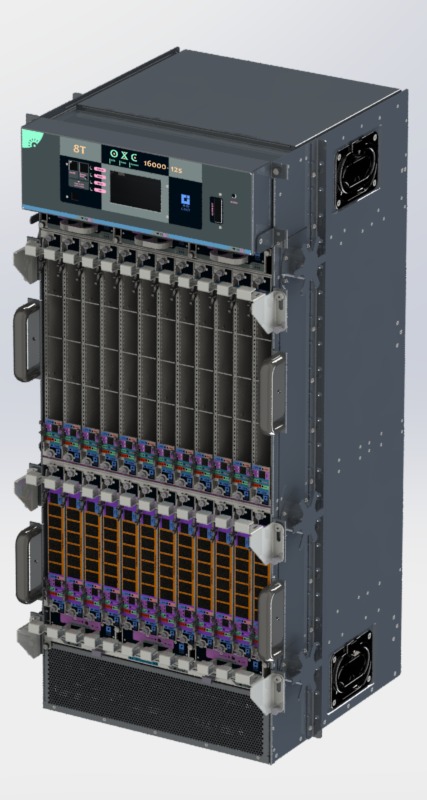en
OTN Cross Connect

OTN Cross Connect is a combination of a Multi-service Optical Transport Network (OTN) Platform and a DWDM Bearer Transport System for Metro and Core Network Applications. This equipment will be able to converge all legacy as well as new client interfaces and map them to OTN based signals using ODU-k switching, grooming, consolidation and multiplexing. The OTN part of the equipment will interface various kinds of legacy & new client optical signals. The Dense Wavelength Division Multiplexing (DWDM) Optical Line System (OLS) will consist of DWDM Mux De-Mux, booster amplifier, pre-amplifier etc. OTN Cross Connect system offers a superior value proposition based on the following: • Greater Transport Capacity per fibre: They exploit the inherent capacity of optical fibre which is vastly underutilized by single channel optical transmission systems. • Preservation of investment in existing equipment: DWDM part of the system will be reused from the already developed 80 Channel DWDM System. • Unifying transport for all services: Different type of services can use the same fibre independent of bit rate and protocols.
• The ODUk cross-connect in the equipment shall provide traffic grooming & consolidation. • The GMPLS with ASON network architecture referred to as vertical networking, the nodes shall host multiple switching layers and shall be controlled by a single control plane. • This Platform will also support for GMPLS based Control plane at different layers including OTN to achieve intelligent functioning. • Client-side Interface: OTU2 (Tri-FEC), 10GE LAN, OC-192/STM-64, FC-800, FC-1200 and CBR for 100G Line card. • The equipment provides FEC enable/disable capability through LCT/EMS. • In laboratory, BER performance over a simulated-section for 48 hours and BER performance is better than 10-15 (with EFEC enabled). • For Ethernet clients, end to end IETF RFC 2544 compliance is tested. • For field, BER performance for 48 hours conforms to ITU-T Rec. G.828 for SDH payloads. • NPT for Network Planning and Provisioning. • Elaborated Alarm reporting. • A user-friendly Local Management Interface (LMI) for Operation, administration and maintenance. • Simple Network Management Protocol (SNMP) based Element Management System (EMS). • Active/Passive Controller card redundancy.
• Cross Connect Capacity : 8T/12T • Nominal Central frequencies : As per ITU-T G.694.1 • Span Attenuation inclusive of cable margin : 22dB (LH)/ Up to 8, 28dB splice loss etc./ No. of Spans (VLH)/ Up to 5 • Line Side Modulation type/ Nominal Data Rate : Coherent DP- QPSK/127.16Gbps • Total Optical Output power (max) : +20dBm • Maximum number of wavelengths for add/drop: 80 at 2D ROADM/8D CDC ROADM • Optical Supervisory Channel Wavelength : 1510 ± 10nm • Optical Supervisory Channel Bit-rate : 1Gbps • Optical Connector Interface : LC/APC, LC/UPC • Interface with SDH/Ethernet/OTN Terminals: As per ITU-T G.959.1/IEEE 802.3ae/ ITU-T G.709 • EMS/LCT Interface : 100 Base-T • Power Supply input voltage range : -40V DC to -60V DC (1+1) • POTP Sub-rack size(12T) : 576mm (W) X 597 mm (D) X 930mm (H) • POTP Sub-rack size(8T) : 507 mm (W) X 515 mm (D) X 978 mm (H)
• Telecommunications: Optical transport systems enable high-capacity voice, data, and video transmission over long distances with minimal signal degradation. • Data Centers: They facilitate fast and reliable interconnections between servers, enhancing data transfer speeds and improving overall performance. • Metro Networks: Used in urban areas to connect various data centers and network nodes, providing high bandwidth and low latency. • Long-Haul Networks: Optical transport is essential for connecting cities and regions over long distances, supporting high-capacity data traffic.

